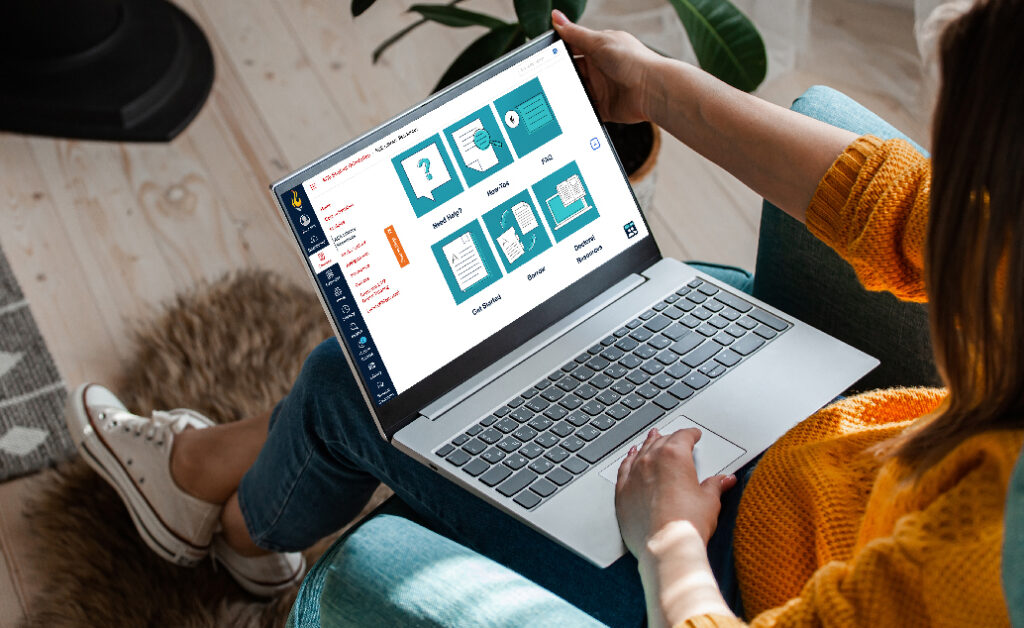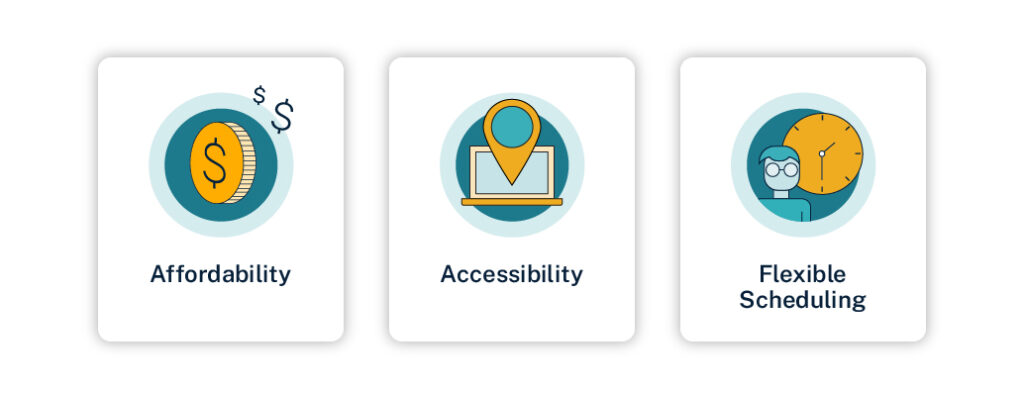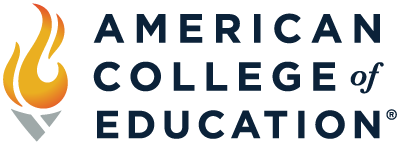
A Post-Pandemic Online Learning Landscape
Online learning was growing but not yet prevalent before the COVID-19 pandemic. The benefits of a virtual learning environment were known but not necessarily favored in large numbers. When the pandemic required institutions to close due to quarantines and limited in-person interaction, education was put on hold with an unknown timeframe as to when they could resume. The World Economic Forum wrote that COVID-19 changed education forever. In 2020 UNESCO reported that 1.2 billion children in 186 countries were affected by school closures due to COVID-19 outbreaks.
As a contact tracer at the time, I interviewed parents and caregivers of students affected by mandated quarantines. I remember one mother dropped her child off after repeated quarantines due to their classmates contracting the virus when I called to notify her that her child was being ordered, again, to stay home from school. This was a major issue for working parents with insufficient access to childcare and this was where online learning came in. For K-12 students, it offered stability in the form of a planned structure that parents could complete their work around. But what about college students?
Higher Education and Online Programming
I was in the last semester of my bachelor’s degree when my education turned to online learning due to the pandemic. Aside from the initial terror of contracting the novel virus, I would be lying if I didn’t admit that I was somewhat relieved to skip my commute to campus and watch recorded lectures in my pajamas. The stress of sitting in a silent lecture hall with hundreds of other students during exams was completely alleviated. All course materials were virtual, so I didn’t need to carry heavy textbooks across campus. The social pressure to look decent and make a good impression in class dropped instantly. Firsthand, I discovered the benefits of online higher education and upon graduation, I felt inspired to enroll at American College of Education for a fully online doctoral degree program.

Online Degree Programs Are Accessible.
Accessibility is enhanced by online learning models. Students can complete degree programs from almost anywhere in the world. Geographical constraints on education are a thing of the past thanks to virtual learning environments and the internet. It even opens doors for inclusivity as students in underserved areas or remote locations now have access to more learning opportunities.
Additionally, online learning’s accessibility shines in regards to participation. Discussions are a major component of online degree programs and the online courses that I teach as a public health educator. Students with difficulty speaking up in traditional classroom settings gain confidence through communicating online. The general assumption is that online interactions lose the quality of student engagement, but it’s actually a remarkable networking tool and opportunity for connection.
For example, I teach a course where students are required to write one initial post with a 100-word minimum and two additional response posts to their peers with a 50-word minimum for each response. Each week, every student can share at least 200 words of their own thoughts, opinions, experiences and questions. This is challenging in traditional classrooms where there is an abundance of social pressure and a limited amount of time for everyone to speak up.
Online learning offers a platform for well-constructed discussions, and they are especially powerful when peer reviewed articles are referenced and cited. Information is articulated better and shared with more clarity when there is time to construct written posts as opposed to rushing to squeeze in an incomplete thought during the middle of a live lecture.
Colleges and universities are tasked with implementing online learning in hybrid or 100% remote options to meet the needs of online learning in the modern era. Lifelong learning is made possible through online platforms and is especially beneficial for older adults who have limited access to transportation or busy schedules.
Such accessible learning can also adapt to meet the needs of students with different learning abilities, styles and paces. For example, recorded lectures can be watched with closed captions and are available to be replayed as often as needed. Students can adjust the volume and even the speed of their instructors’ voices with online audio management.
Affordability
Online learning promotes affordability in higher education, reaching a wider range of students while lowering or eliminating costs related to housing, commuting and other campus-related fees like dining or parking. Cost-effectiveness is paramount as it nods to my previous point of accessibility. At most colleges, like ACE, students also have a variety of payment options that help avoid larger upfront payments and meet students where they are financially. Additionally, institutions might provide online courses that are completely free, offering quality educational materials without the barrier of cost.
Something else to consider about the affordability of online learning is saving not only money but energy. Many students are working and/or starting a family when they reach college, even more so in graduate school. I have met many people who dropped out of graduate school because they had a child and/or needed to make more money. Online learning preserves more of a student’s energy that would normally be spent preparing for, traveling to, waiting on and attending classes.
Flexible Scheduling
While online learning is known for its flexibility, every institution approaches it differently. Synchronous learning involves real-time instruction, so a lecture might be scheduled for a specific time when students must attend. Asynchronous learning does not have a real-time component. Students can access learning materials at their own pace during an allotted time frame.
For example, the course I teach moves week by week. I open “Week 1” on Monday morning, and the students have until the following Sunday night to complete all their graded assessments. It allows for a wider window than if I required my class to virtually meet with me every Wednesday at 4:00 pm ET for a lecture (an example of synchronous learning). Some programs might favor synchronous learning because it maintains a stronger sense of unity among the class. Others might pride themselves on the freedom their students have to further develop self-motivation and organizational skills.
One of my favorite aspects of online learning in higher education is the ability to go at your own pace, especially with an asynchronous course. It can be tough to motivate yourself, but that’s a beautiful part of the challenge. You grow initiative and discipline.
Most online programs, like those offered at ACE, offer the flexibility to work when and where you are most comfortable and most productive. In addition, online programs are often accelerated, enabling quicker completion times than most traditional learning programs.
How Online Learning Impacts Mental Health
Remote learning has positive and negative impacts on students. The ability to complete coursework from almost any location is beneficial to those who appreciate a low-stress environment. Many students now more than ever experience greater levels of anxiety in traditional classroom settings. Scheduling regular breaks and participating in virtual social activities can help to combat negative effects of online learning.
A negative side to online learning can be isolation. Students can feel loneliness, stress and social isolation without face-to-face interactions with their peers. Another downside might be that some students do not have a space within the home environment that allows for quiet, focused study sessions. The good news is that some schools offer access to online mental health resources that include wellness information, counseling services and support groups.
At ACE, all students have a Student Success Coach during their entire journey to provide support. Additionally, students have access to extensive success resources within the Virtual Wellness Center in their student portal. They are also encouraged to create study groups within their cohorts.
Online Learning and Higher Education Careers
Higher education trends are continuing to evolve, and career goals for higher education professionals are likely to shift as online learning plays a more prominent role. Faculty roles in traditional learning now prefer producing digital content, online teaching, learning management systems, virtual interactions with students and mastery of technological learning tools. Online educators are needed as digital course development and instruction are prioritized.
In addition, new support positions are available like online education coordinators, instructional designers and digital learning specialists. One of the major demands is support staff assisting with technical issues, virtual platforms and online resources. It can be overwhelming to adapt to the needs of online education, so professional development programs should be implemented regularly to ensure that educators are equipped with the skills they need to thrive with incoming changes.
Technological Advances of Online Learning in Higher Education
During my bachelor’s degree program, I took a hybrid course (half in-person and half online) in anatomy and physiology. The online component allowed us to explore cadavers, or human corpses, in detail that might not have been feasible in person. The first half of the week included an in-person lecture where we had the opportunity to discuss course information immediately as it was being taught. The second half of the week included online laboratory assignments where the resources were vivid and life-like, allowing us to virtually peel back the layers of the human body. We could zoom in to better examine cell types in 3D models that would have required significantly more time and equipment in person (lab space, microscopes, etc.). The online laboratory component was also a good alternative for students and instructors who did not enjoy working with real human bodies. This is a prime example of how in-person instruction can benefit from the incorporation of an online learning component.
Continuous innovations in artificial intelligence, virtual reality and augmented reality are creating a meaningful online learning experience. Virtual reality includes an immersive experience where the real world is replaced with a virtual environment, often experienced with a headset that produces visual and auditory stimuli. Students can even enter a virtual classroom!
Augmented reality is used in combination with the real world. An example is if you use a smartphone camera to overlay the image of a new sofa in your living room. My experience with the virtual anatomy and physiology laboratory is a form of augmented reality.
The way we think about higher education now compared to higher education a century from now might seem like comparing ourselves to a science fiction novel. The online learning environment is likely to become more immersive and interactive. Lecture halls of university campuses may one day become spacious computer labs where students have the resources needed to excel in virtual education programs.
Virtual Proctoring and Plagiarism Software
An initial assumption that some might have about online higher education is that it’s easy to cheat on exams and you can have AI chat software write your papers. Online programs actually go to great lengths to uphold academic integrity. Virtual proctoring is a way to supervise online exams or other activities. Webcams and/or website recording can be used during assessments to ensure that rules are being followed. Facial recognition technology is used to verify that the person performing the graded task is indeed the correct student. The camera and web browser prevent searching for answers in another tab or on another device along with looking away from the test screen. Some companies will do the proctoring for you while others can involve the professors themselves. Sometimes exams will have a strict time limit and close when the time allowance is reached.
As for plagiarism, there are software built into online learning platforms that check for originality. Turnitin is a popular plagiarism detection application that is designed to search for previously submitted student papers, advanced AI like ChatGPT, academic articles, websites and books to identify matches in a student’s writing. If you’re applying for an online degree program and expecting it to be no work at all, you might want to rethink your commitment to higher education.
Online Degree Program Coursework
Online programs are typically less expensive, do not require commuting and offer greater flexibility than traditional in-person programs. However, you will still have to complete assignments with the rigor of equal or greater than that found in traditional programs. My online master’s program at ACE required me to focus for hours each week. The time I would’ve spent driving to class was spent on reading and learning the course material.
As a doctoral student, the program requires a new multi-page paper per course to be turned in each week. Research standards are upheld to the same standard as in-person courses. Rigor is not lost in online learning, despite popular belief. It takes an incredible amount of self-motivation and hours of work. You are certainly still earning your degree regardless of its online nature.
In sum, the landscape of higher education is moving towards the integration or total adoption of online learning. The sooner we can promote the remarkable benefits, the greater reach higher education will have.
Find an affordable, flexible and high-quality online program at American College of Education.

